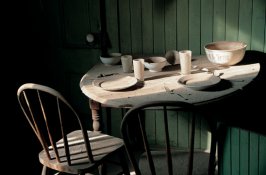hi lol
i guess it all comes down to personal preference ...
as seen in responses to your question, some folks
think nothing of a nice large print from a 35mm negative
while others say "- x -" is just big enough ...
maybe you should enlarge some of your favorite negatives
to different sizes and see which ones you like the best.
you know what you like .... and how you want to display them.
i like making small books of prints ... some made without film,
some made with small film ( 35mm ) and some made with large format
film ( 4x5 and 5x7 ) ... i am a fan of small prints, so 1/2 frame or 110 would work for me too







 I'm interested in your comments regarding aperture size and the dof scale on the lens, can you point me towards any resources where I can read more on these factors please? Wrt medium format I would have to consider blasphemy and go the full digital route post processing and whilst I can raise cash for the camera it would take a long time to get the latest offering from either epson or hp plus a dedicated scanner.
I'm interested in your comments regarding aperture size and the dof scale on the lens, can you point me towards any resources where I can read more on these factors please? Wrt medium format I would have to consider blasphemy and go the full digital route post processing and whilst I can raise cash for the camera it would take a long time to get the latest offering from either epson or hp plus a dedicated scanner.